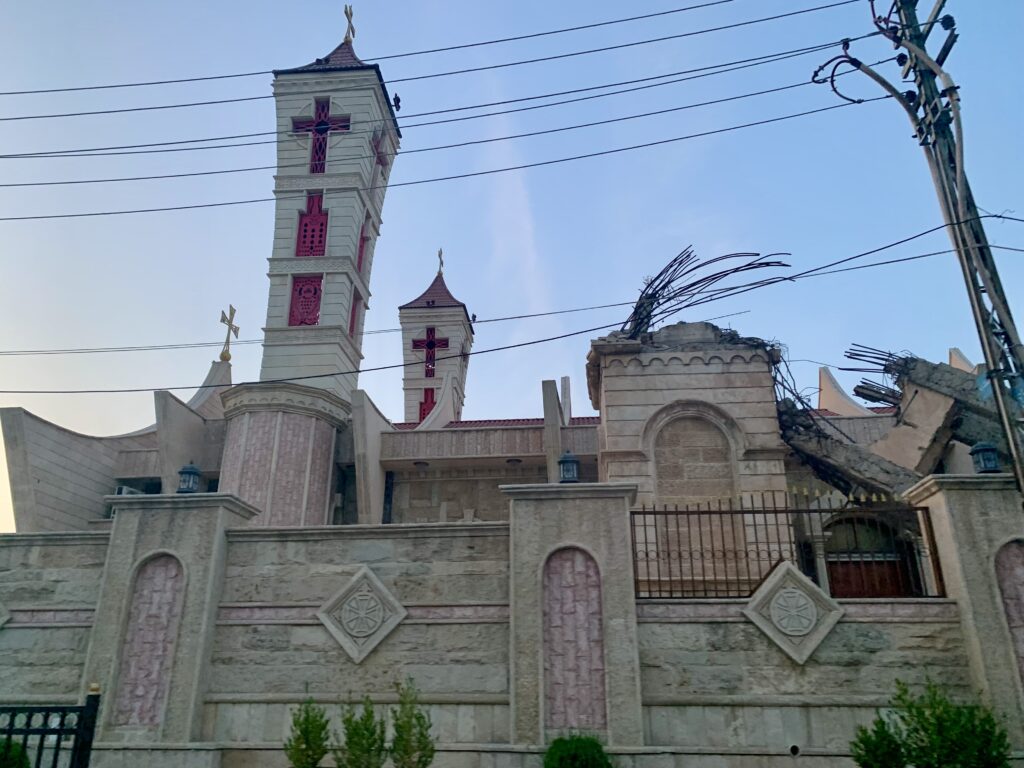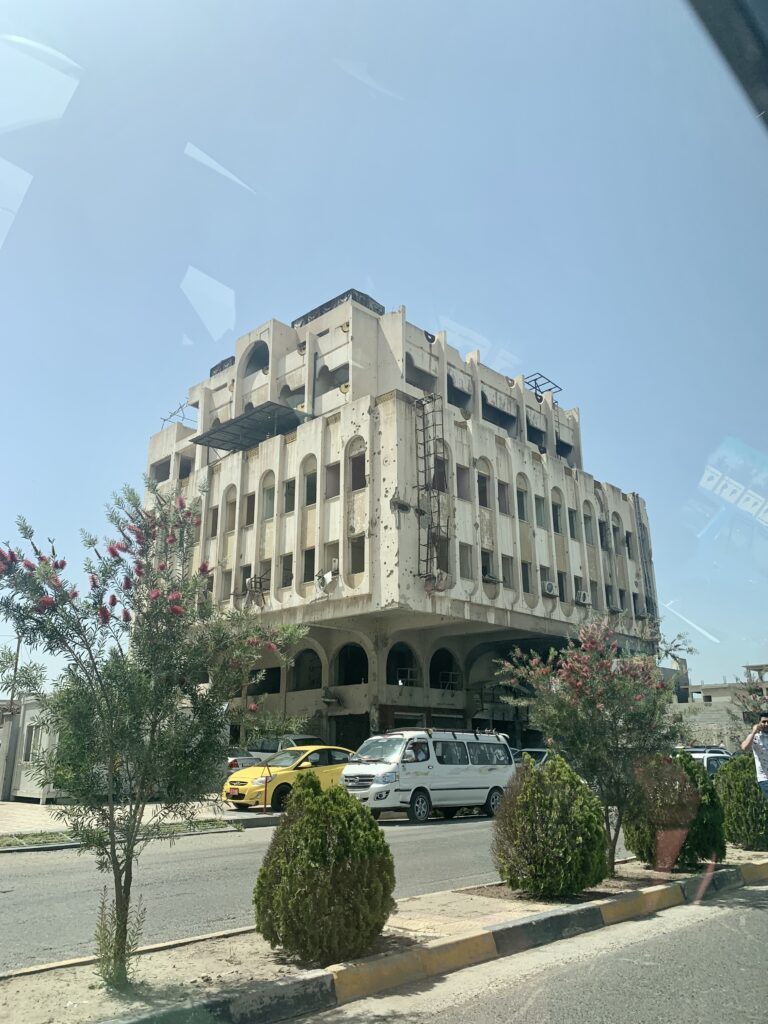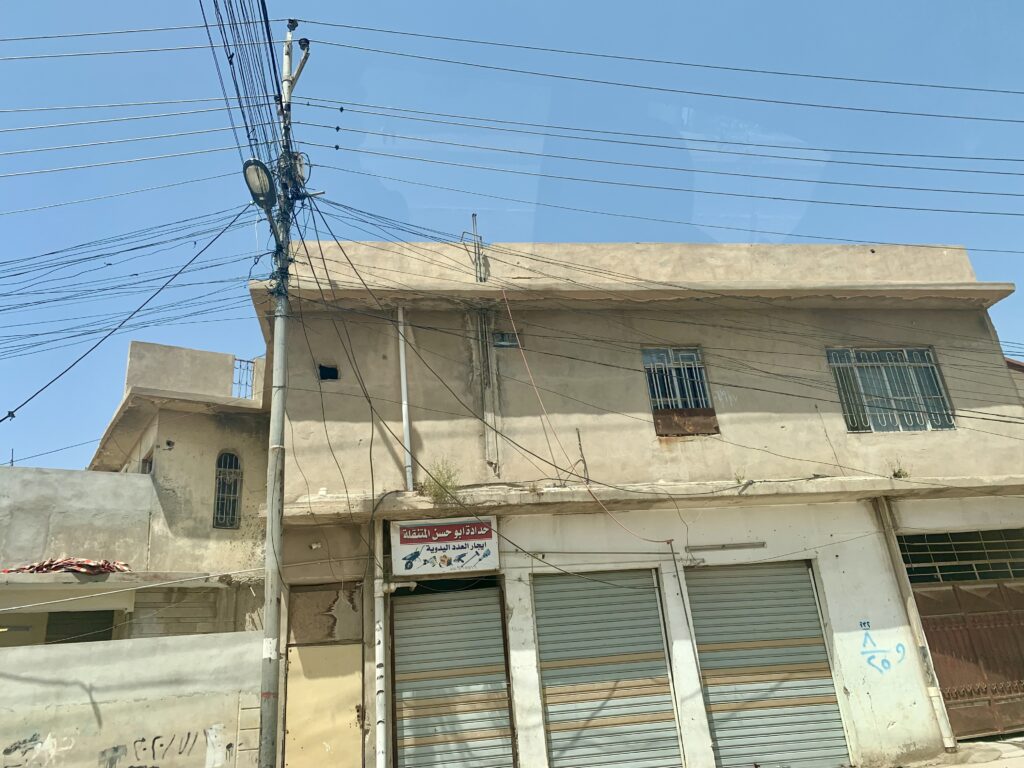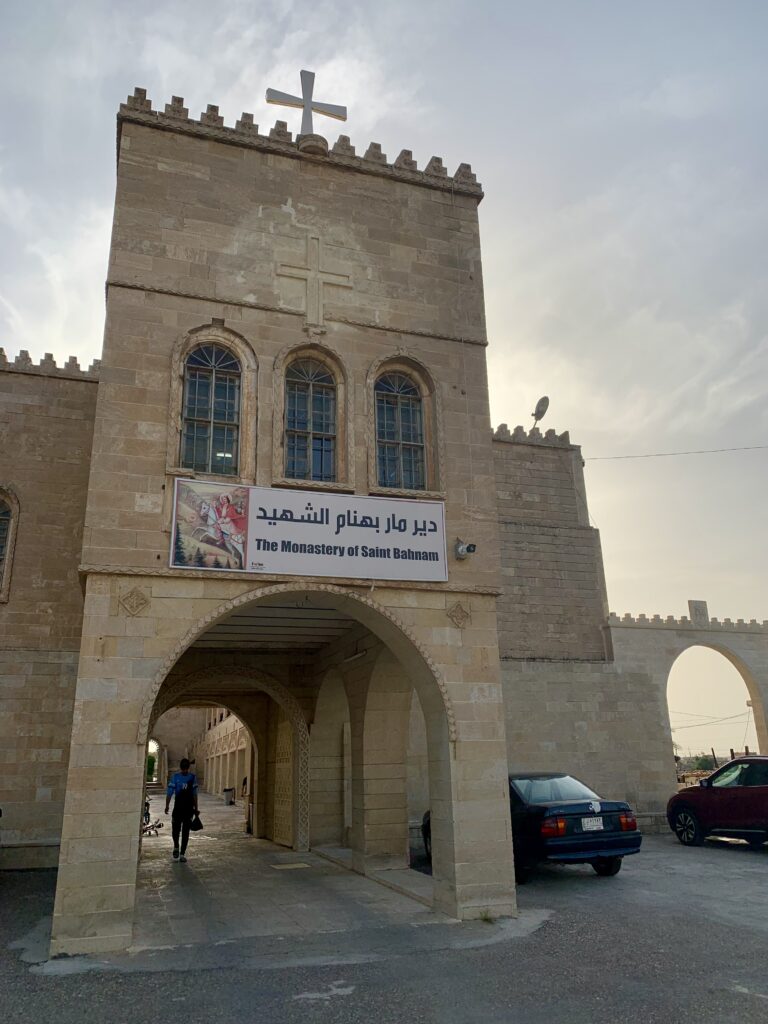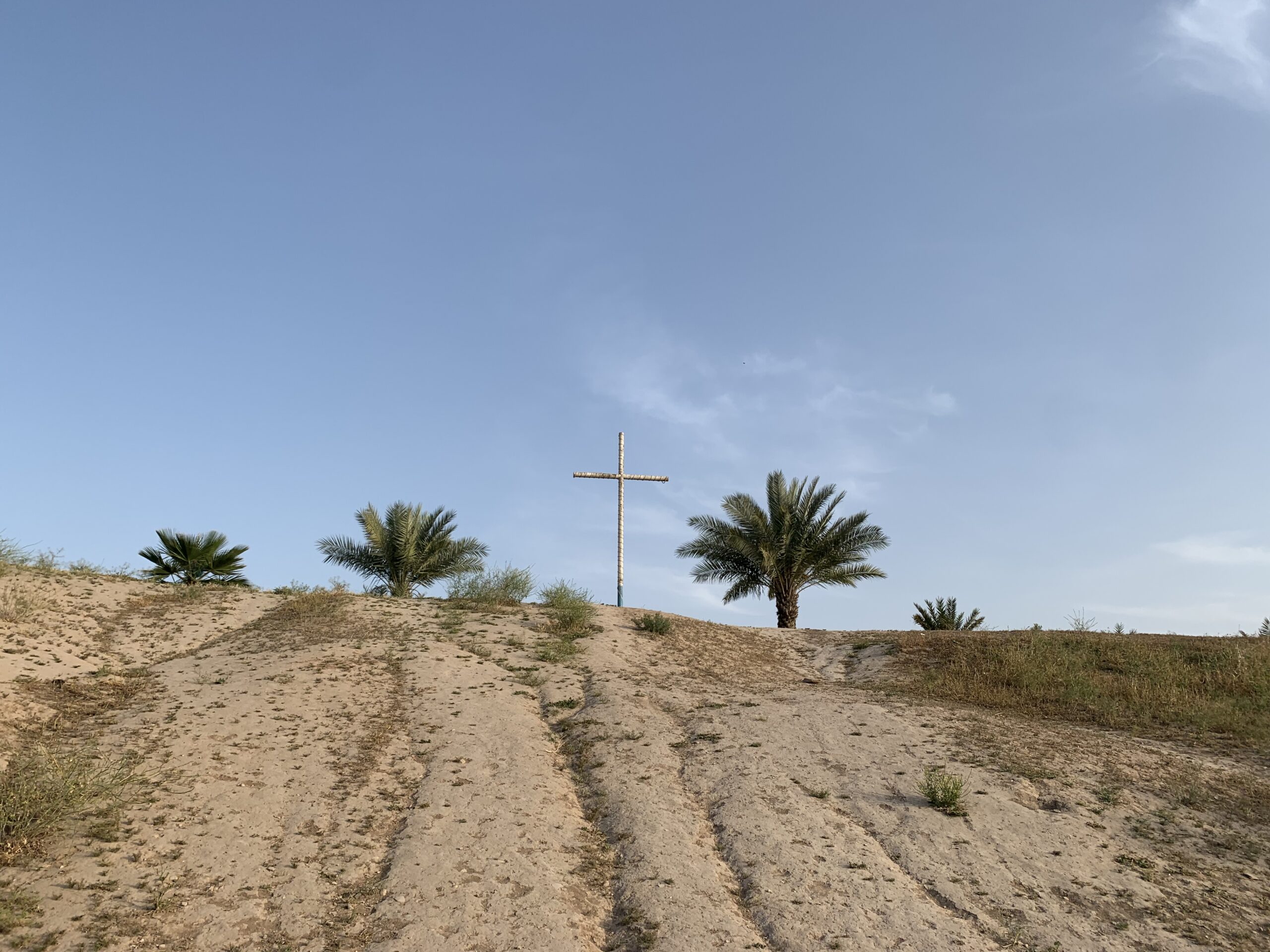Last spring, I visited Iraq—a country I didn’t quite know what to expect from, and one that pleasantly surprised me. I met some of the friendliest and most hospitable people, saw beautiful green mountains, and tasted excellent food. I have decided to write about my impressions of Iraq as a series. This is my first Letter from Iraq—a country I would love to visit again someday, if safety and circumstances allow.
At the heart of the Christian community
I am sitting in a small room in a guesthouse belonging to a local church in Qaraqosh, Iraq. I’m sipping iced coffee from a can with Arabic letters and listening to the sounds of a nighttime football match taking place behind the church walls. Playing during the day is out of the question—by late April, temperatures soar well above thirty degrees Celsius, and the scorching Iraqi sun makes any major movement impossible. Iraqis, therefore, live at night. Many businesses don’t open until the evening and close no earlier than four in the morning.
The entrance to the church, where the local bishop has provided us with accommodation, is guarded by several armed men. A large cross shines into the darkness of the Iraqi night, and a sign at the entrance reminds visitors that just a few years ago, there were only ruins here.
When ISIS invaded Qaraqosh and other Christian towns in Iraq more than ten years ago, they used local churches to train their fighters before eventually destroying them. The church where I am staying has been rebuilt from scratch, standing as proof of the strength and courage of the local people who are determined to restore the life they were deprived of for so many years.
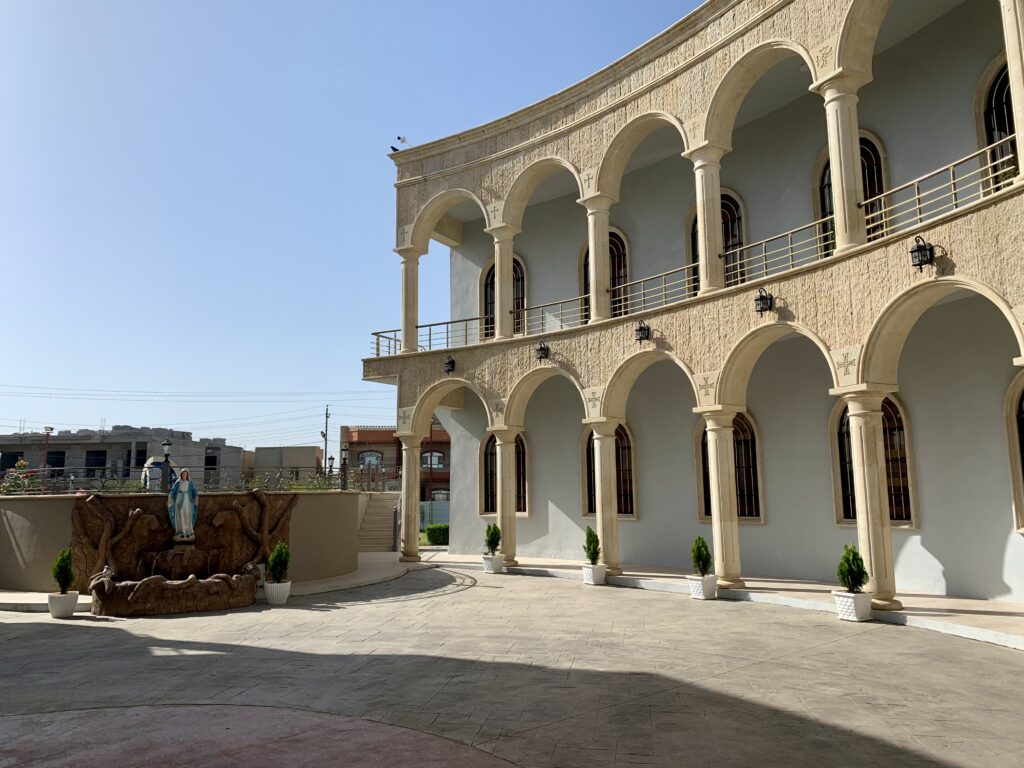
We are only half an hour away from Mosul, where some of the fiercest and most brutal battles took place under ISIS rule. As we drive through Mosul, we pass ruined houses scarred by shelling and the remains of Mosul University buildings, now mere skeletal structures.
This is our home
Christians, who were persecuted by ISIS terrorists, fled en masse—if they managed to escape. During my journey, I meet people who fled from ISIS but, despite all obstacles, chose to return. To a region still scarred by years of war, where reconstruction will take years to come. But this is their homeland, a home they don’t want to leave again.
Over a cup of strong, cardamom-scented coffee in a newly built family home, I listen to the story of Iqbal, a seamstress who decided to return to her hometown. “We fled from ISIS to Erbil, in Iraqi Kurdistan. When we returned, we found our house completely destroyed,” says the otherwise cheerful and energetic woman, her voice tinged with sadness. She was determined to return to Qaraqosh at any cost and start over. Thanks to the support of Caritas Czech Republic, which provided her with a grant, she now works as a seamstress and supports her entire family. “I love learning new things all the time—I actually taught myself to sew by watching YouTube,” she reveals as she offers us more coffee and an endless stream of homemade treats.
Qaraqosh, called Bakhdida by locals, is considered the “capital of Iraqi Christians.” It is located in the fertile Nineveh Plains, which have been the heart of the country’s Christian community for centuries. Local Christians still speak dialects of Aramaic—the language Jesus is believed to have spoken. Before the U.S. invasion in 2003, there were around 1.5 million Christians in Iraq. After the fall of Saddam Hussein’s regime, many Iraqi Christians moved to the Nineveh Plains, hoping to find a safe haven there. Even then, their numbers had already dropped to around 400,000.
In June 2014, ISIS occupied Qaraqosh, and once again, local Christians were forced to flee. Now, ten years after the ISIS invasion, Christians are slowly returning, rebuilding their homes, and continuing to uphold their religious traditions. However, many never came back—choosing instead to emigrate to the United States or Australia. Many of the people I meet have relatives in one of these countries.
Through the Checkpoints
The church is quiet in the morning. Birds sing in the courtyard, and the gentle hum of water flows from an ornamental fountain, watched over by a statue of the Virgin Mary. The sun is shining, and the sky is a flawless blue. It looks like it will be another scorching day. At the exit, I greet the guard, who wishes me good morning and unlocks the heavy gate.
It’s Friday—the most important day of the week for Muslims. In Iraq, a predominantly Muslim country, the official weekend is Friday and Saturday. But here, in the Christian part of the country, Sunday is the most important day. A colleague tells me that local Christians adjust by having their weekend on both Friday and Sunday. Still, many people continue to work on both days, especially farmers and those running small shops and restaurants.
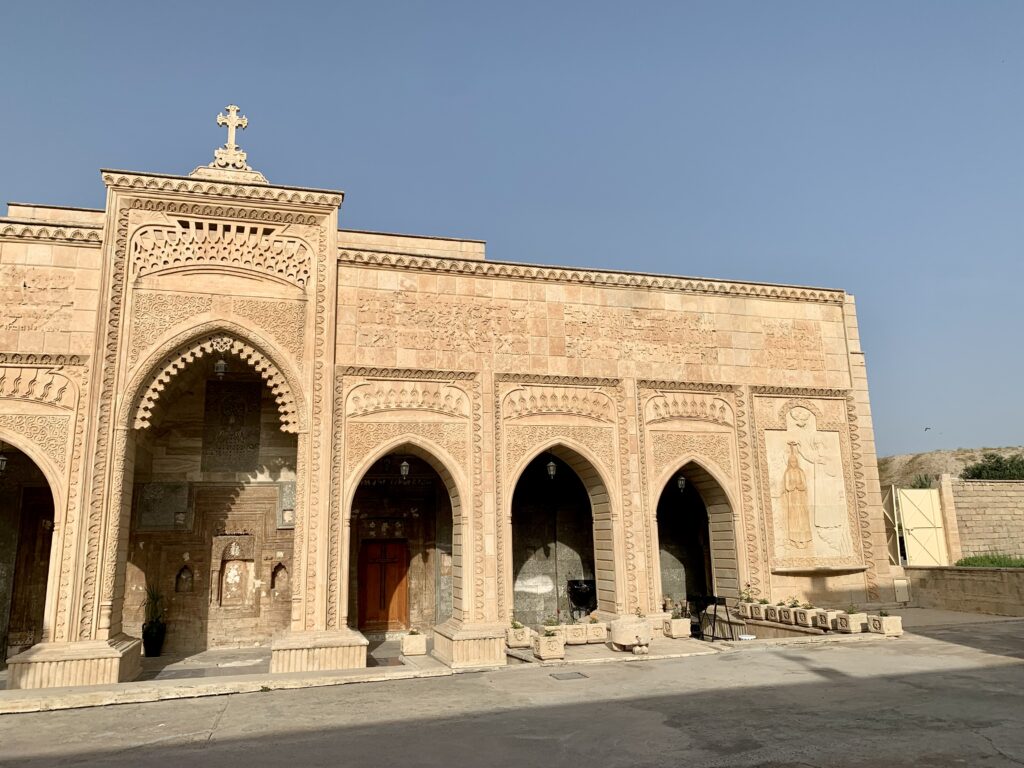
We are heading to visit the Mar Behnam Monastery. On the way, we pass through several military checkpoints, presenting our passports and documents proving that, as humanitarian workers, we have permission to be in these parts of Iraq. I can’t imagine traveling here without the backing of a well-established organization that has been helping in Iraq for years—nor without our local colleagues, who explain everything to the armed guards at the checkpoints. A colleague asks me how many checkpoints I have to go through in the Czech Republic to get to work or another city. He can’t believe me when I say none. Once again, I realize how many privileges I have—simply because of where I was born.
The Mar Behnam Monastery is surrounded by vast fields, with a large cross standing between two palm trees. Like all religious buildings in the area, this monastery was damaged by ISIS fighters and later restored after their defeat. According to legend, the monastery was built in the 4th century by King Sennacherib as an act of repentance after ordering the execution of his son, Mar Behnam, and daughter, Mart Sarah, for converting to Christianity.
In the monastery’s garden, there is a peaceful calm—much like in the church guesthouse where I’ve spent the past few nights. Here, too, I meet the local bishop, who thanks us for visiting and supporting the local communities. As I sit in the tranquil garden, sipping my now-familiar iced coffee, the heat and humidity become a little more bearable.
Ten years later
Back in Qaraqosh for dinner, I try the local shawarma. The streets of the small Christian town are coming to life—the evening has arrived, and the temperatures are dropping. To refresh ourselves we are given freshly squeezed grape juice and an invitation to one of the many religious celebrations, which we gladly accept.
Just a short distance away is one of the largest local churches – with a column broken in half. It is not being repaired or waiting to be demolished. It stands here as a reminder of the destruction that the Islamic State has brought to Qaraqosh and other cities in Iraq.
Today, ten years after the invasion, people are trying to move on. They are repairing their homes, reopening shops and returning to the life they knew before. How are they doing? And what are they facing? That’s what people in and around Qaraqosh told me – you’ll find their stories in the next letter from Iraq.
